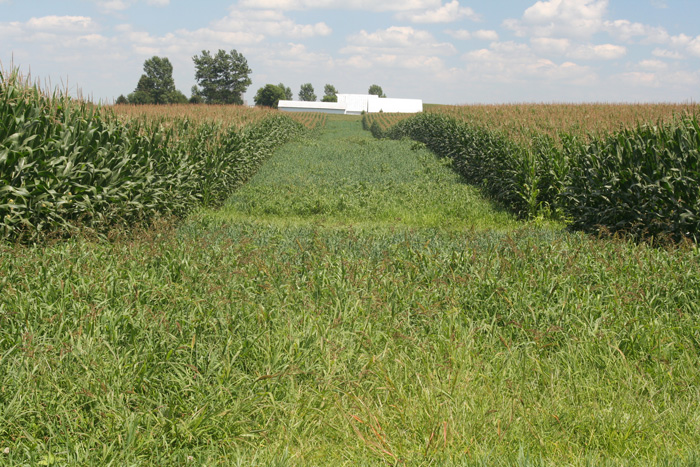
From the time their flashy colors prompted North America’s early settlers to name them after King William, Prince of Orange, Monarch butterflies have captivated scientists and nature lovers alike. Not only does the Monarch demand attention as it regally floats through a field of wildflowers, its genetically-programmed, yearly migration from the eastern U.S. to Mexico, and from the western part of the country to California, make it a unique member of the butterfly world.
Since the 1990s, however, the Monarch population has declined 80 percent in Mexico and 74 percent in coastal California (Tweet this). According to the World Wildlife Fund,
“Like most butterflies, monarchs are highly sensitive to weather and climate: They depend on environmental cues (temperature in particular) to trigger reproduction, migration, and hibernation. Their dependence on milkweed alone as a host plant is a further vulnerability, particularly as milkweed abundance is declining throughout the monarch range. They also face a decline in their overwinter habitat, and the effects of an increasing frequency of extreme weather events such as drought and severe storms, and extremes in hot and cold temperatures.”
And while a recent resurgence during the summer of 2015 provided some hope, a freak snowstorm in Mexico in March 2016 brought their numbers back down.
All the more reason, then, for what Wendy Caldwell, program coordinator for the Monarch Joint Venture (MJV), characterizes as an “all hands on deck effort” to replenish Monarch habitat all along their migration route.
Pooling the efforts of more than 50 research, education, and conservation partners across the U.S., MJV is working to protect monarch and pollinator habitat. As Caldwell explained in a recent email,
“National goals have been set for the population size to return to the 20 year average of about 6 hectares of space occupied by 2020. With the growing interest in protecting and conserving habitat for monarchs throughout North America, there is definitely optimism for a population rebound. As more and more sectors become interested in this issue and take actions to create more and better quality habitat for an iconic insect, many other species will benefit as well.”
Increasing Monarch habitat has required on-the-ground help from farmers. For example, the Tallgrass Prairie Center and Xerces Society are collaborating with MJV on a “Monarch Habitat on Farms” project, now in its second year, which helps local farmers plant in-field prairie strips of a diverse mix of wildflowers.

As Ashley Kittle, Prairie on Farms program manager at the Tallgrass Prairie Center explained in a phone interview, the program works with large-scale corn and soy bean farmers, who plant the mix in strips that run the length of their field and measure 30-40 feet wide.
According to Kittle, these strips not only benefit Monarchs and other pollinators, they help the farmers as well.
“[The strips] provide erosion control and prevent nutrient run-off from their field. Surface run-off can take nitrogen and phosphorus residue into the water supply. The strips help clean up the water and carry it down to the aquifer in a way it would naturally function prior to development, preventing algae bloom and flooding in the process.”
While the focus in Iowa has been on large-scale growers, says Kittle, in Wisconsin, MJV’s Monarch Habitat on Farms has partnered with smaller scale organic farms through the Xerces Society.
For example, Gretchen and Tom Griffith, owner/operators of Door Creek Orchard in Cottage Grove, Wisconsin, who grow apples, pears, grapes, and other fruits, have devoted a portion of their acreage to Monarch habitat. As they explained in an email,
“Our farm is 80 acres total, about 12 of which are in apples. We try hard to leave milkweed throughout the whole 80 acres when it pops up; we have a large unmanaged marsh and several smaller unofficial ‘pollinator strips,’ but our official habitats are a 1/2 acre dry prairie and a 17 acre tall grass prairie. They are both planted with several different species of milkweed in addition to other native nectar plants and prairie grasses.”
According to Laura Jackson, director of the Tallgrass Prairie Center, it is too soon for these farm programs to have any affect on the numbers of Monarchs. Success, she explains, will be measured by whether
“we can improve the skills of practitioners who are planting prairie for conservation on agricultural lands. If they experience more success due to our efforts we will begin to see more high quality prairie in the landscape.”
In other words, the goal is to make expanding and conserving Monarch habitat a routine farming practice.
As the Griffiths noted in their email,
“Our farm has always been dedicated to biodiversity, it is a key part of our management philosophy. We also love Lepidoptera in general and thought maintaining habitat an easy way of enhancing our general biodiversity while also helping a struggling, very special, species. There is nothing like their amazing migration anywhere else on earth, and we want to do our part in helping to preserve it.”




